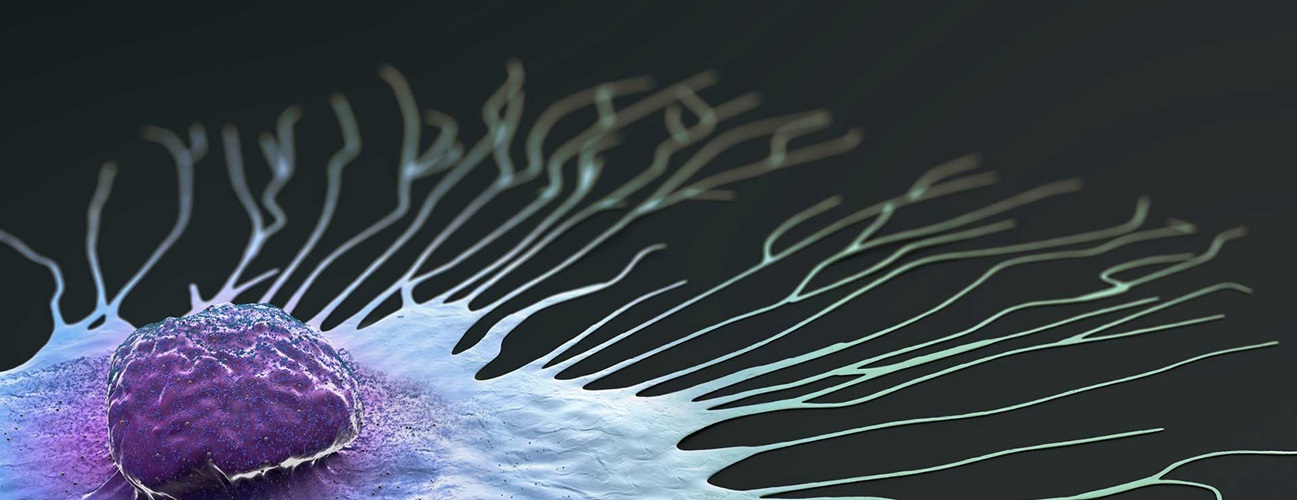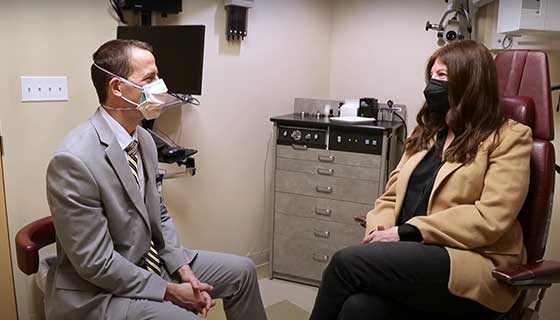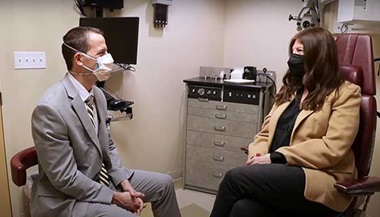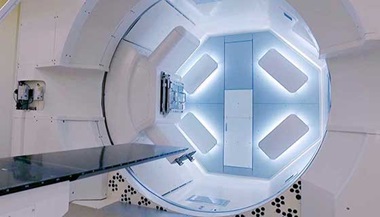Proton Therapy for Breast Cancer
Proton therapy, a highly precise form of radiation, may be one treatment option for some people with breast cancer. Your oncologist may recommend it instead of traditional radiation therapy.
What is proton therapy for breast cancer?
Proton therapy uses protons (positively charged particles) to target and destroy breast cancer cells. Like all radiation therapy, proton therapy works by damaging the DNA inside cancer cells. This makes it harder (and sometimes impossible) for the cancer cells to divide and spread.
When proton particles reach a tumor or risk area, they deliver a high dose of radiation directly to the target area and then stop moving. Proton therapy allows radiation oncologists to target breast cancer precisely, while minimizing the risk of damage to surrounding tissues and organs such as the heart and lungs.
How is proton beam radiation for breast cancer different than other types of radiation therapy?
Different types of radiation therapy use different particles to produce the energy that kills cancer cells. Proton therapy is unique — and more precise — because the proton particles don’t travel as far in the body as traditional (photon) radiation particles.
Photon radiation hits the targeted risk area but then continues through the body, affecting other tissues. This is called an “exit dose.” Breast cancer treatment areas are often close to vital organs such as the heart, lungs and esophagus. When a photon radiation beam continues past the target area, the radiation beam can damage these organs.
By contrast, a proton beam delivers the radiation only to the breast target area and then stops. There is no exit dose, so nearby tissues and organs are not affected. This reduces risk of organ or tissue damage and minimizes side effects.
Can proton therapy treat all types of breast cancer?
Proton therapy is an option for treating most types of breast cancer, including:
- Estrogen positive or negative
- Progesterone positive or negative
- HER2 positive or negative
- Triple negative
- Triple positive
Proton therapy is usually not used to treat breast cancer that has metastasized (spread) to other parts of the body. Your oncologist can discuss whether it is an option for you.
This treatment may be considered for patients who had either a lumpectomy or mastectomy. Your oncologist may recommend it in combination with other treatments, including:
- Chemotherapy
- Hormone therapy
- Immunotherapy
- Targeted drug therapy
The best candidates for proton therapy are people with:
- Breast cancer that is near critical organs, such as the heart or lungs
- Breast tumors or areas of cancer cells that are very close to the surface
- History of breast radiation in the same area
- Medical conditions that place them at higher risk of complications from traditional radiation therapy
When is proton therapy not the best option for breast cancer treatment?
The following are some examples of when proton therapy is not the best option.
- It is not recommended for those with breast cancer who need to begin radiation therapy as soon as possible. Planning proton therapy treatment takes longer because it targets such a precise area.
- Proton therapy takes longer to deliver than traditional radiation therapy, so it is not recommended if you cannot comfortably stay in one position for the entire treatment.
What to Expect During Proton Therapy for Breast Cancer
Breast cancer proton therapy includes several steps, and much of it happens behind the scenes with members of the radiation therapy team. If your radiation oncologist decides that proton therapy is the best option, the next steps are:
- Simulation. You receive a practice CT scan to find the best position for you during radiation treatment. The radiation oncology team then creates an immobilization device that will help you be still during treatment.
- Contouring. The radiation oncologist identifies the breast tumor(s) or target area for radiation therapy. Areas to avoid might also be mapped out (for example, areas of the heart, lungs, thyroid or spine that are near the breast tumor).
- Dose planning. The radiation oncologist determines the amount of radiation necessary to hit the breast tumor.
- Dosimetry. Dosimetrists use computer programs to determine the most effective position for the radiation beam to target the breast tumor.
- Quality assurance. Members of the team review the plan and perform quality assurance checks to help make sure the therapy will reach the breast tumor.
- Proton beam radiation therapy. Radiation therapists set up and administer proton therapy under the radiation oncologist’s supervision. Along the way, they check to make sure the radiation is reaching the correct target area.
The number of proton therapy treatments for breast cancer varies among patients based on the diagnosis and treatment plan. Most people receive daily treatments every weekday for several weeks.
Side Effects of Proton Therapy for Breast Cancer
The side effects of proton therapy are similar to the side effects for all radiation therapy. The most common is redness or soreness around the breast where the radiation beam enters the skin (like a sunburn). Fatigue or low energy is another common side effect.
Proton Therapy Clinical Trials at Johns Hopkins Medicine
Johns Hopkins radiation oncologists are leading or participating in several trials to evaluate the role of proton therapy in treating breast cancer. Our doctors can discuss participation in clinical trials if it’s an option for your treatment.






